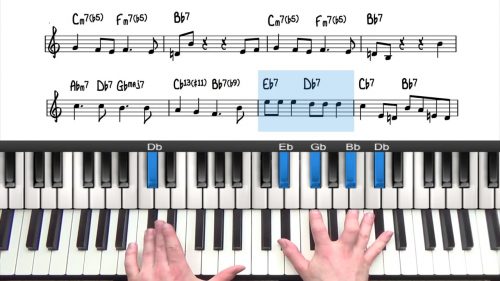“Question & Answer” Solo Piano Technique
Welcome to this “5 Minute Masterclass” on “Question & Answer” Solo Piano Technique. Also known as “Call & Response”, we will cover a few ideas and concepts that will help you think of the piano as an orchestra, and help you think of your solo jazz piano arrangements as an orchestration.
First, understand that the range of the piano makes it unique to all other instruments. This span encompasses the ranges of virtually every other instrument in the orchestra, and so effectively, we have the role of every orchestral instrument at our fingertips. We will use the tune “The Days Of Wine & Roses ” to demonstrate.
“Question & Answer” also known as “Call & Response”
First, we will introduce a concept referred to as “call and response” or “question & answer”. This is a way of thinking of your playing as a dialogue. Every melody, or phrase, can be a question that has a response. Think of this as a musical conversation.
A nice way to achieve this is to separate the melodic phrases from the harmonic support. Playing single note melodies and also double octave melodies will help you imitate the phrasing of a singer.
Imitate Singer & Piano Duos
If you listen to singer and piano duos, you will hear that the accompaniment responds to the singer’s expression of the lyrics. By playing single note melodies we add a lyrical aspect to our playing, and then by introducing our voicings after the chord has been stated, we create a beautifully interactive, orchestral effect.
Visualise The Orchestral Roles
When playing solo piano in this style, it can help to visualise the roles and sounds of the orchestral instruments. In this lesson we will utilise everyt register of the piano and demonstrate how to imitate the following roles when playing solo piano:
- Violins
- Cello
- Flute
- Brass Section
- Harp
- Double Bass
- Trumpet
Practice Tips
-
Analyse the direction of the melody, and then find ways that I can balance this out by moving voicings, or the answers to the questions in opposite directions.
-
'Echo' and 'repeat' lines around the piano which again adds to the sense of dialogue and conversation.
-
The 4-way-close can be a nice effect to create an ensemble effect. Think of the big bands of Duke Ellington and Count Basie.
-
Now that you understand these concepts, you will be able to pick them up in the recordings that you are listening to.





